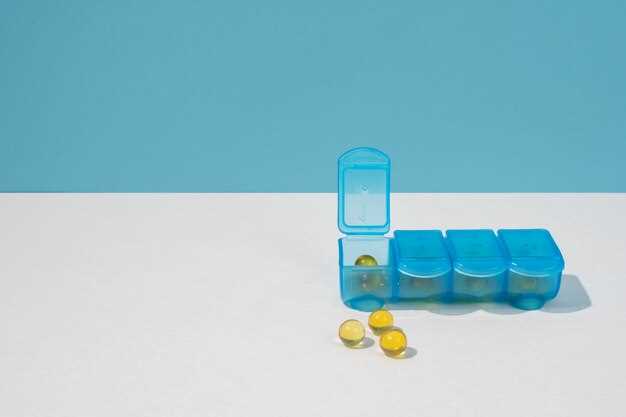
In the world of pharmacology, hydroxyzine is classified as an antihistamine. This medication is commonly used to treat various allergic reactions, such as sneezing, itching, watery eyes, and runny nose. Its strong anti-allergic properties make it a popular choice for individuals suffering from hay fever, hives, and other similar conditions.
Additionally, hydroxyzine is classified as a sedative and anxiolytic agent. Due to its calming effects, it is often prescribed for patients experiencing anxiety, tension, and even as a pre-anesthetic medication. The unique combination of antihistamine and sedative properties makes hydroxyzine a versatile and valuable tool in the medical field.
It’s important to note that hydroxyzine is a prescription medication and should be taken under the guidance of a healthcare professional. The dosage and duration of treatment may vary depending on the individual’s condition and response to the medication.
When considering hydroxyzine for your allergy or anxiety-related symptoms, consult with your doctor to determine if it’s the right choice for you. Remember, proper medical advice is crucial for the safe and effective use of any medication.
Overview of hydroxyzine
Hydroxyzine is a medication that is classified as an antihistamine and anxiolytic. It is commonly used to treat allergic reactions, anxiety, and itching.
Antihistamines are drugs that help to reduce the symptoms of allergies by blocking the release of histamine in the body. This can help to relieve symptoms such as sneezing, itching, and a runny nose.
Anxiolytics, also known as anti-anxiety medications, are drugs that are used to treat anxiety disorders. They work by affecting certain chemicals in the brain that may become unbalanced and cause anxiety.
Hydroxyzine is available in various forms, including tablets, capsules, and syrup. It can be taken with or without food, depending on the instructions provided by your healthcare provider.
It is important to note that hydroxyzine may cause drowsiness and impair your ability to drive or operate heavy machinery. Therefore, it is recommended to avoid activities that require alertness until you know how this medication affects you.
If you have any questions or concerns about hydroxyzine or its classification, it is best to consult with your healthcare provider for more information. They can provide personalized advice and guidance based on your specific needs and medical history.
Importance of drug classification

Understanding drug classification is crucial in the field of healthcare as it helps healthcare professionals organize and categorize different medications based on their properties, indications, and potential risks. Drug classification provides valuable information that allows healthcare providers to make informed decisions regarding the selection and administration of drugs.
One of the main benefits of drug classification is that it helps healthcare professionals determine the appropriate drug therapy for a particular medical condition. By classifying drugs into different categories, healthcare providers can easily identify which medications are suitable for treating a specific disease or symptom.
In addition, drug classification plays a vital role in patient safety. It helps prevent medication errors by ensuring that healthcare professionals have a clear understanding of the properties and potential risks associated with each drug category. Drug classification also aids in the identification of drug interactions and contraindications, allowing healthcare providers to avoid potentially harmful combinations of medications.
Furthermore, drug classification is essential for regulatory purposes. Regulatory agencies, such as the Food and Drug Administration (FDA), rely on drug classification systems to evaluate the safety and efficacy of medications. By classifying drugs based on their pharmacological properties, therapeutic uses, and potential risks, regulatory agencies can establish guidelines for drug approval, labeling, and usage.
Overall, drug classification is a fundamental component of healthcare that contributes to optimal patient care, medication safety, and regulatory compliance. Healthcare professionals, pharmaceutical companies, and regulatory agencies rely on drug classification systems to ensure the proper use and administration of medications.
Types of drug classification
When it comes to classifying drugs, there are several different approaches that can be taken. Understanding the different types of drug classification is important for both healthcare professionals and patients. Here are some of the most common types:
1. Scheduling classification: This type of classification is used to determine the legal status of a drug and its potential for abuse. Drugs are usually categorized into different schedules based on their potential for abuse and medical use. This classification system helps regulate the manufacturing, distribution, prescription, and dispensing of drugs.
2. Pharmacological classification: This type of classification is based on the mechanism of action of the drug. Drugs are grouped together based on their chemical composition, target receptor, or physiological effect. This helps healthcare professionals understand how a drug works and its potential side effects.
3. Therapeutic classification: This type of classification is based on the therapeutic use of the drug. Drugs are grouped together based on the medical condition they are used to treat. For example, drugs used to treat hypertension will be classified under the “Antihypertensives” category.
Each type of drug classification serves a different purpose and provides valuable information about a drug. When considering a medication, it is important to understand its classification to ensure its appropriate use and potential risks.
Scheduling classification

The scheduling classification of hydroxyzine refers to the legal controls and regulations surrounding the use, distribution, and dispensing of the drug. This classification is determined by government bodies such as the Food and Drug Administration (FDA) in the United States.
Hydroxyzine is classified as a prescription-only medication, meaning that it cannot be obtained without a valid prescription from a healthcare professional. This classification ensures that the medication is used safely and appropriately under the supervision of a qualified healthcare provider.
There are several reasons for the scheduling classification of hydroxyzine. Firstly, hydroxyzine has the potential to cause sedation and drowsiness, especially at higher doses. Therefore, it is important for patients to be monitored by a healthcare professional to ensure their safety while using the drug.
Additionally, hydroxyzine can interact with other medications, such as central nervous system depressants, which can further enhance its sedative effects. By classifying hydroxyzine as a prescription-only medication, healthcare providers can closely monitor potential drug interactions and adjust the treatment plan accordingly.
The scheduling classification also helps prevent misuse and abuse of hydroxyzine. As a medication that can produce sedative effects, there is a risk of individuals using hydroxyzine for recreational purposes or in higher doses than prescribed. By requiring a prescription, the likelihood of misuse and abuse is reduced, promoting public safety and well-being.
In summary, the scheduling classification of hydroxyzine as a prescription-only medication is an important aspect of ensuring its safe and appropriate use. This classification helps protect patients from potential adverse effects, allows for monitoring of potential drug interactions, and helps prevent misuse and abuse. If you believe hydroxyzine may be appropriate for your medical condition, it is important to consult with a healthcare professional who can assess your individual needs and provide the necessary guidance and prescription.
Pharmacological classification
Pharmacological classification refers to the grouping of drugs based on their mechanism of action or the way they interact with specific receptors in the body. This classification system helps healthcare professionals understand how a drug works and can help guide treatment decisions.
Hydroxyzine, a commonly used medication, belongs to the pharmacological class known as antihistamines. Antihistamines work by blocking the effects of histamine, a substance released by the body during allergic reactions. By inhibiting histamine, hydroxyzine can help relieve the symptoms of allergies, such as itching, sneezing, and runny nose.
In addition to being an antihistamine, hydroxyzine also has other pharmacological properties. It exhibits sedative and hypnotic effects, making it useful for managing anxiety and promoting sleep. These properties make hydroxyzine a valuable drug for conditions such as generalized anxiety disorder and insomnia.
The pharmacological classification of hydroxyzine highlights the drug’s unique mechanism of action and its potential therapeutic benefits. It provides healthcare professionals with valuable information about the drug’s effects and helps guide its appropriate use. If you have any questions about hydroxyzine or its pharmacological classification, consult your healthcare provider for more information.
| Drug Classification | Overview | Importance |
|---|---|---|
| Chemical classification | Classification based on the drug’s chemical structure | Helps in understanding drug properties and interactions |
| Therapeutic classification | Classification based on the drug’s intended use or therapeutic effect | Aids in determining the appropriate use of the drug |
| Scheduling classification | Classification based on the drug’s potential for abuse or dependence | Used to regulate the availability and use of drugs |
Therapeutic classification
In the therapeutic classification of drugs, hydroxyzine falls under the category of antihistamines. Antihistamines are medications that work by blocking the action of histamine in the body. Histamine is a natural substance produced by the body in response to allergens, such as pollen, dust mites, or animal dander. When histamine is released, it can cause symptoms like sneezing, itching, and watery eyes.
Hydroxyzine is commonly used to relieve symptoms of allergies, such as itching, runny nose, and hives. It can also be used to treat anxiety and tension, as it has sedative and calming effects. Hydroxyzine belongs to a class of antihistamines known as first-generation antihistamines, which are often used for their sedative properties.
By targeting the histamine receptors in the body, hydroxyzine helps to alleviate symptoms associated with allergic reactions and anxiety. It works by inhibiting the release of histamine, thereby reducing the allergic response and promoting relaxation.
| Drug | Therapeutic Classification |
|---|---|
| Hydroxyzine | Antihistamine |
It is important to note that while hydroxyzine can be effective in relieving symptoms, it may cause drowsiness and impair your ability to perform tasks that require alertness. It is advisable to avoid driving or operating heavy machinery until you know how this medication affects you.
If you are experiencing symptoms of allergies or anxiety, consult with your healthcare provider to determine if hydroxyzine is right for you. They can provide guidance on the appropriate dosage and help monitor for any potential side effects.
Remember, always follow the instructions provided by your healthcare provider and read the medication label carefully. Only take hydroxyzine as directed and do not exceed the recommended dose.
